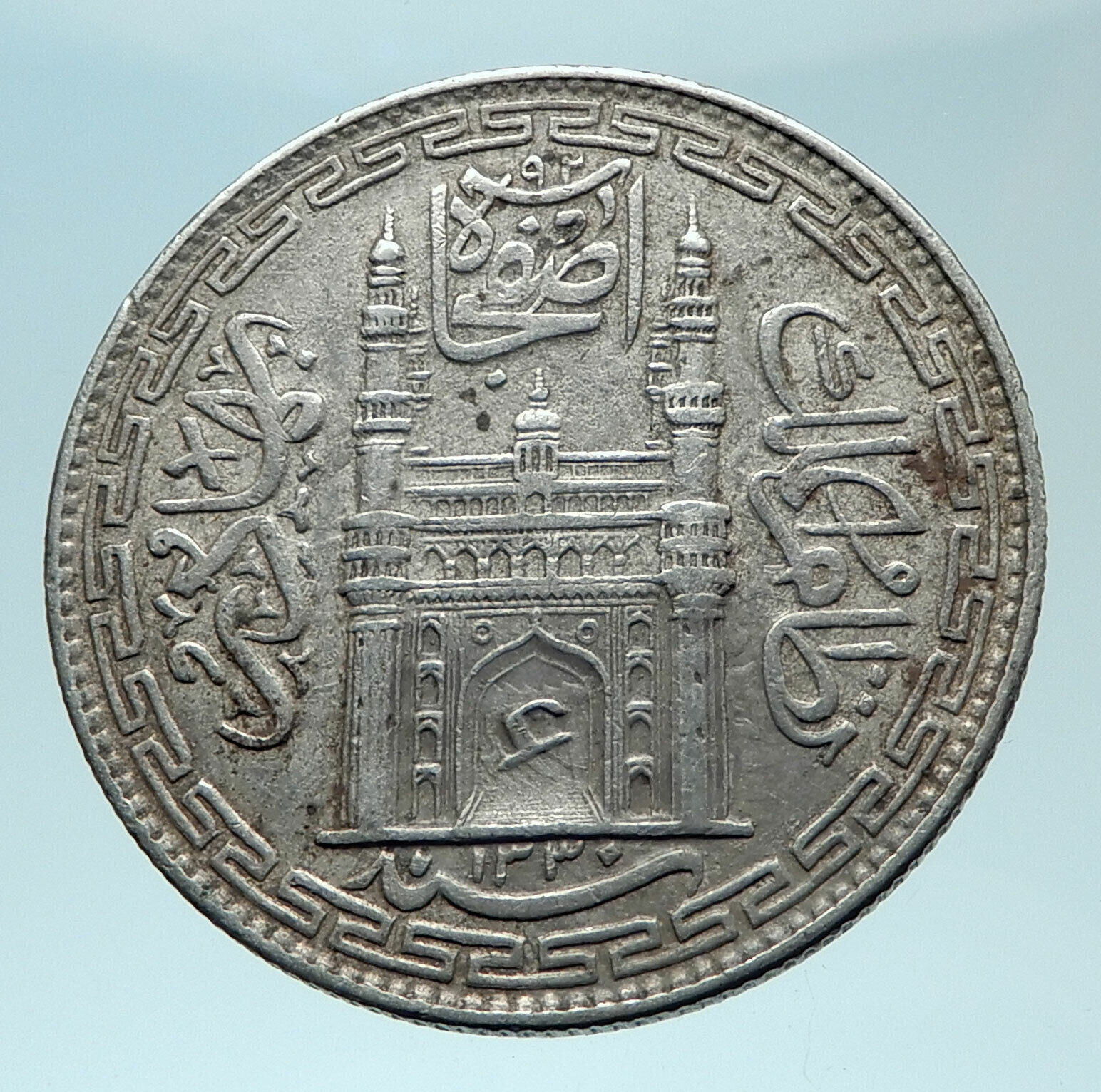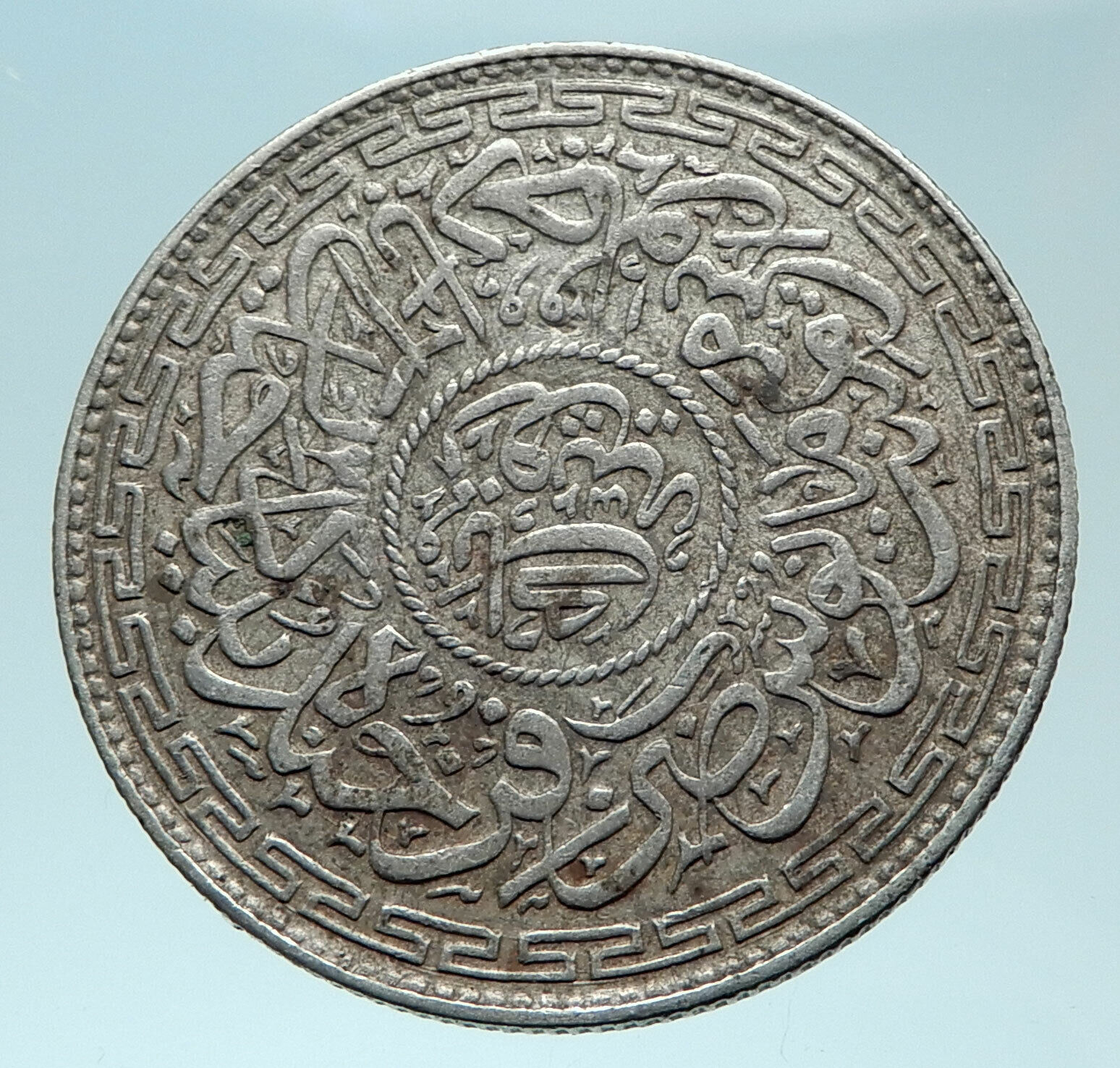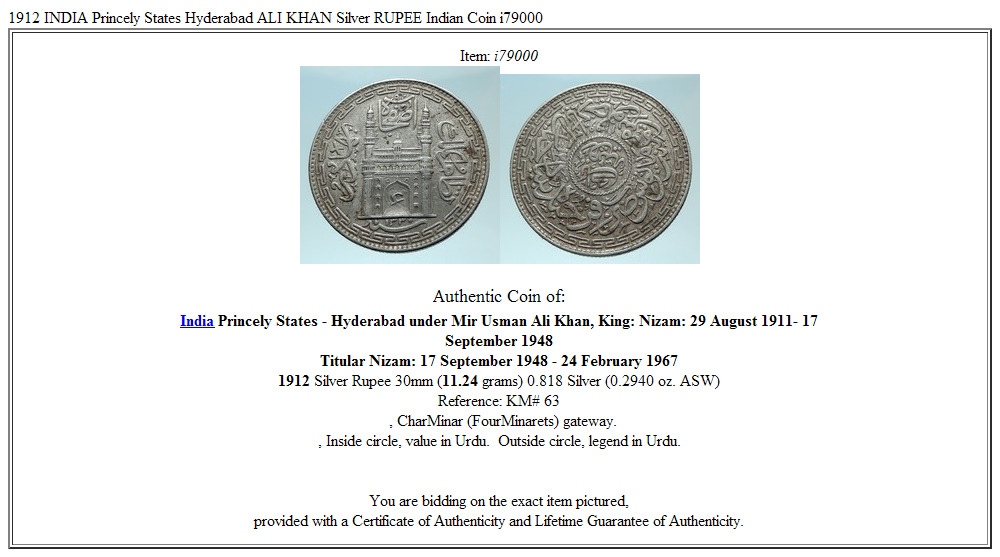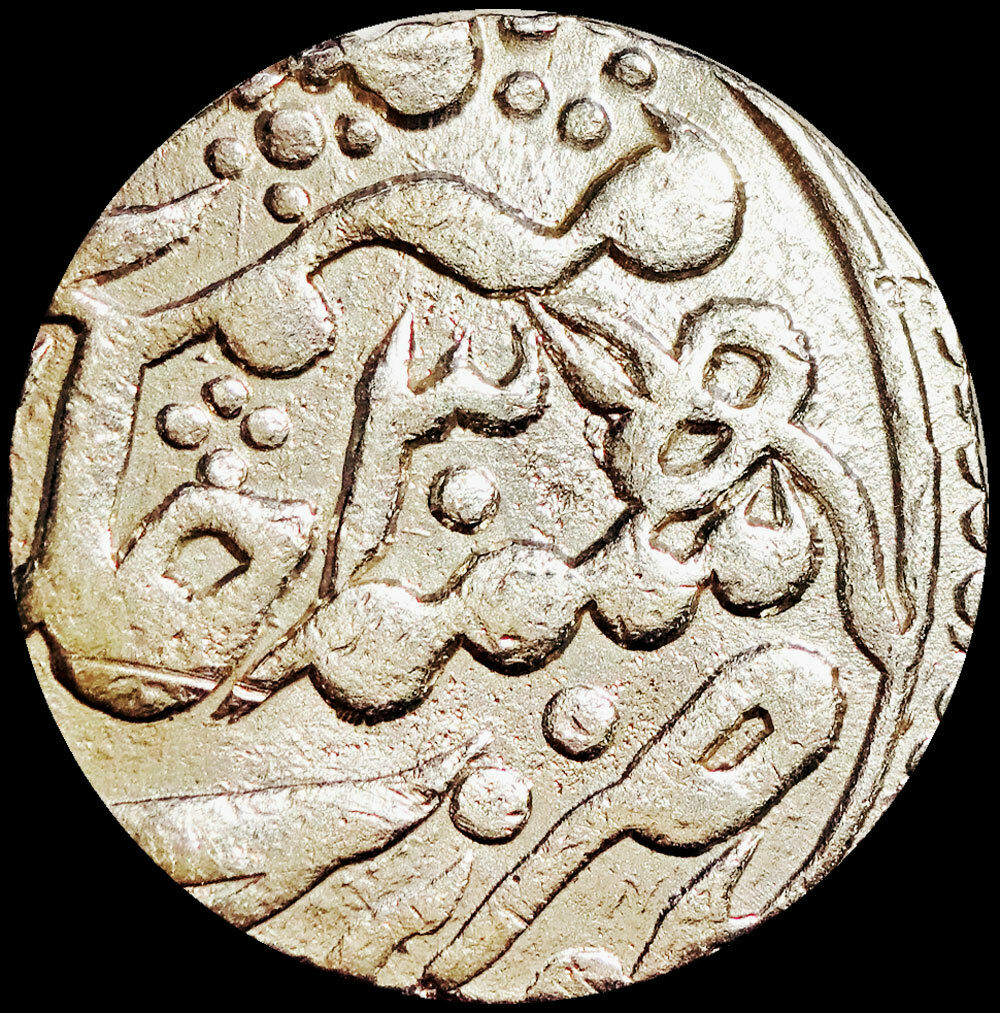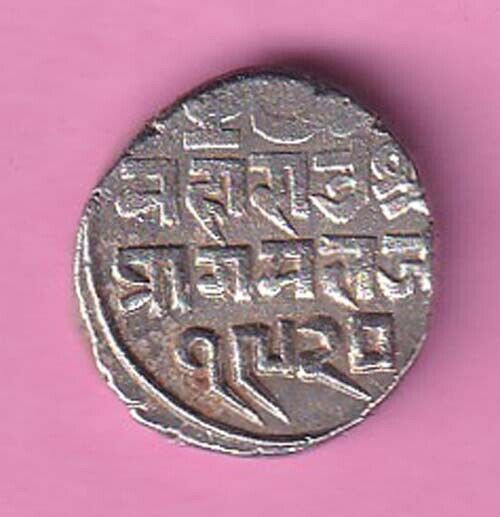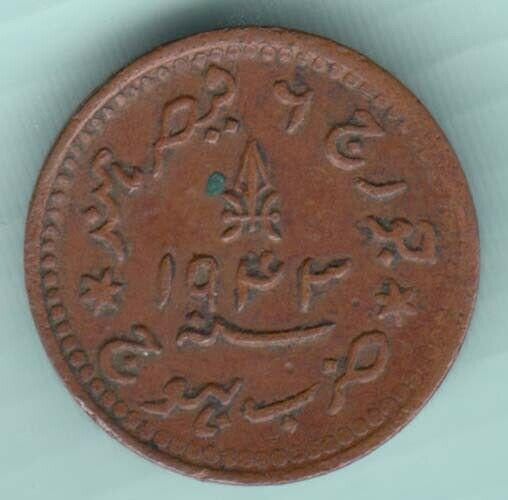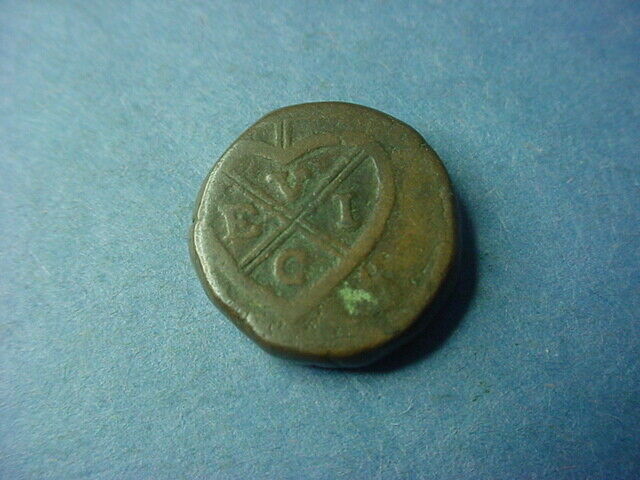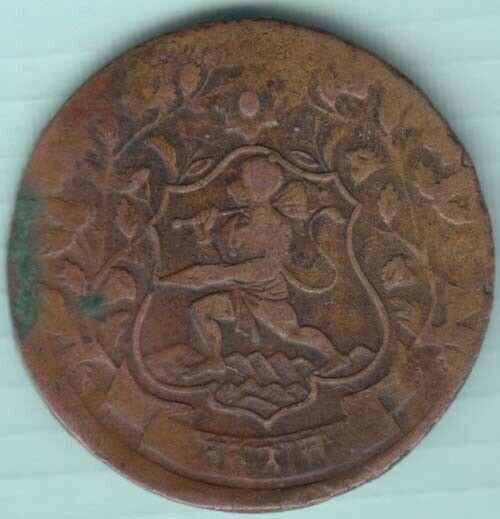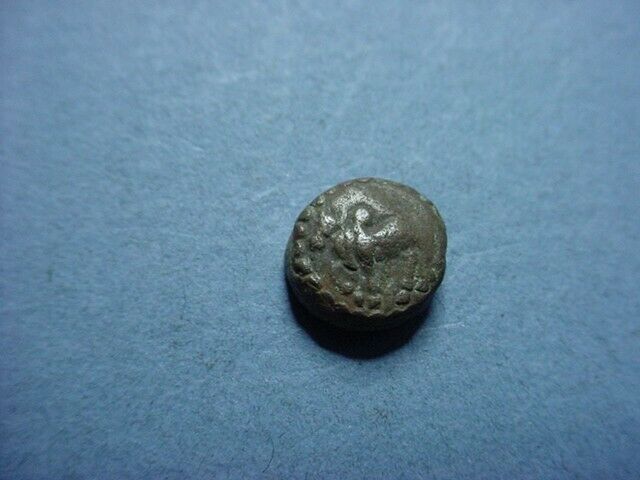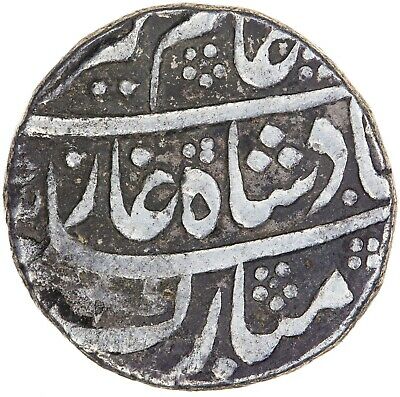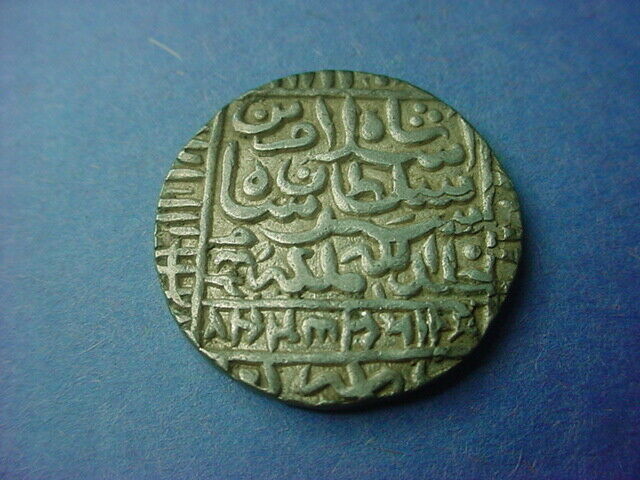
Item:
i79000
Authentic Coin of:
India
Princely States – Hyderabad under Mir Usman Ali Khan, King: Nizam: 29 August 1911- 17 September 1948
Titular Nizam: 17 September 1948 – 24 February 1967
1912
Silver Rupee 30mm (
11.24
grams) 0.818 Silver (0.2940 oz. ASW)
Reference: KM# 63
اصفجاہ بهَادُر نظامُ الملك ء ســـنہ١٣٣٠ , CharMinar (FourMinarets) gateway.
يَك روپيّہ جُلوسِ مَيمِنت مَانوس ضَرِبَ فرخنده بُنَيَاد حَیدرآبَادُ, Inside circle, value in Urdu. Outside circle, legend in Urdu.
You are bidding on the exact item pictured, provided with a Certificate of Authenticity and Lifetime Guarantee of Authenticity.
His Exalted Highness Nawab Sir
Mir Osman Ali Khan Siddiqi, Asaf Jah VII
GCSI GBE (6 April 1886 – 24 February 1967), was the last Nizam (ruler) of the princely state of Hyderabad, the largest princely state in British India. He ruled Hyderabad State between 1911 and 1948, until it was annexed by India. He was styled as
His Exalted Highness the Nizam of Hyderabad
. He was one of the wealthiest people of all time. In 1937, he was featured on the cover of
Time
magazine, labelled as the 5th richest man in history and the richest Indian ever.
In many accounts, he is held to have been a benevolent ruler who patronized education, science and development. During his 37-year rule, electricity was introduced, railways, roads and airways were developed. He is credited with the establishment numerous public institutions in the city of Hyderabad, including the Osmania University, Osmania General Hospital, State Bank of Hyderabad, Begumpet Airport, and Hyderabad High Court. Two reservoirs, namely Osman Sagar and Himayat Sagar were built during his reign, to prevent another great flood in the city.
He was also a philanthropist, donating millions of rupees to various educational and religious institutions all over India. Apart from his wealth, he was known for his eccentricities, as he used to knit his own socks, and borrow cigarettes from guests.
After India’s independence in 1947, the Nizam did not wish to accede his state to the newly formed nation. By then, his power had weakened due to the Telangana movement and rise of a radical Muslim militia known as the Razakars. In 1948, the Indian Army invaded and annexed Hyderabad State, and the Nizam was forced to surrender. Later he was made the Rajpramukh of Hyderabad State between 1950 and 1956, after which the state was partitioned and became part of Andhra Pradesh, Karnataka and Maharashtra. The Nizam died in 1967.
The Nizam lived at King Kothi Palace-bought from a nobleman-for all his life from age 13. He never moved to Chowmahalla Palace, even after his accession to the throne.
Unlike his father, he was not interested in fine clothing or hunting. His hobbies included poetry; he used to write Urdu ghazals.
Wives and children
On 14 April 1920, the Nizam married Sahebzadi Azmath unnisa Begum (Dulhan Pasha Begum) (1889-1955), daughter of Nawab Jahangir Jung Bahadur, at Eden Bagh now known as Eden Garden at King Kothi, Hyderabad at the age 21. Nawab Mir Khudrath Nawaz Jung Bahadur was the first brother-in-law of the Nizam, and the uncle of his sons Azam Jah (1907-1970), Moazzam Jah (1907-1987), and Shehzadi Pasha.
Azam Jah married Durru Shehvar, daughter of Abdul Mejid II (the last Ottoman Caliph and cousin and heir to the last Sultan of the Ottoman Empire). They had two children, Mukarram Jah and Muffakham Jah. Moazzam Jah married Princess Niloufer, a princess of the Ottoman empire.
While some sources say he had only 34 children, including 18 sons and 16 daughters., others report he had had 149 children.
Final years and death
The Nizam continued to stay at the King Kothi Palace until his death. He used to issue
firmans
on inconsequential matters in his newspaper, the Nizam Gazette.
He died on Friday, 24 February 1967. He had willed that he be buried in Masjid-e Judi, a mosque where his mother was buried, that faced King Kothi Palace. The government declared state mourning on February 25, 1967, the day when he was buried. State government offices remained closed as a mark of respect while the National Flag of India was
flown at half-mast
on all the government buildings throughout the state. According to Nizam Museum documents,
“The streets and pavements of the city were littered with the pieces of broken glass bangles as an incalculable number of women broke their bangles in mourning, which Telangana women usually do as per Indian customs on the death of a close relative.”
Millions of people of all religions of different parts of the State entered Hyderabad in trains, buses and bullocks to see the last glimpse of their king’s mortal remains in a coffin box in the King Kothi Palace Camp in Hyderabad. The crowd was so uncontrollable that barricades were installed alongside the road to enable people to move in the queue. The Nizam’s funeral procession was the biggest non-religious, non-political meeting of people in the history of India till that date. D. Bhaskara Rao, chief curator, of the Nizam’s Museum stated that an estimated one million people were part of the procession.
Hyderabad
is the capital of the Indian state of Telangana and
de jure
capital of Andhra Pradesh. Occupying 650 square kilometres (250 sq mi) along the banks of the Musi River, Hyderabad City has a population of about 6.9 million and about 9.7 million in Hyderabad Metropolitan Region, making it the fourth-most populous city and sixth-most populous urban agglomeration in India. At an average altitude of 542 metres (1,778 ft), much of Hyderabad is situated on hilly terrain around artificial lakes, including Hussain Sagar-predating the city’s founding-north of the city centre.
Established in 1591 by Muhammad Quli Qutb Shah, Hyderabad remained under the rule of the Qutb Shahi dynasty for nearly a century before the Mughals captured the region. In 1724, Mughal viceroy Asif Jah I declared his sovereignty and created his own dynasty, known as the Nizams of Hyderabad. The Nizam’s dominions became a princely state during the British Raj, and remained so for 150 years, with the city serving as its capital. The city continued as the capital of Hyderabad State after it was brought into the Indian Union in 1948, and became the capital of Andhra Pradesh after the States Reorganisation Act, 1956. Since 1956, Rashtrapati Nilayam in the city has been the winter office of the President of India. In 2014, the newly formed state of Telangana split from Andhra Pradesh and the city became the joint capital of the two states, a transitional arrangement scheduled to end by 2025.
Relics of Qutb Shahi and Nizam rule remain visible; the Charminar-commissioned by Muhammad Quli Qutb Shah-has come to symbolise Hyderabad. Golconda fort is another major landmark. The influence of Mughlai culture is evident in the region’s distinctive cuisine, which includes Hyderabadi biryani and Hyderabadi haleem. The Qutb Shahis and Nizams established Hyderabad as a cultural hub, attracting men of letters from different parts of the world. Hyderabad emerged as the foremost centre of culture in India with the decline of the Mughal Empire in the mid-19th century, with artists migrating to the city from the rest of the Indian subcontinent. The Telugu film industry based in the city is the country’s second-largest producer of motion pictures.
Hyderabad was historically known as a pearl and diamond trading centre, and it continues to be known as the “City of Pearls”. Many of the city’s traditional bazaars remain open, including Laad Bazaar, Begum Bazaar and Sultan Bazaar. Industrialisation throughout the 20th century attracted major Indian research, manufacturing and financial institutions, including Defence Research and Development Organization, Bharat Heavy Electricals Limited, Indian Institute of Chemical Technology, the National Geophysical Research Institute and the Centre for Cellular and Molecular Biology. Special economic zones dedicated to information technology have encouraged companies from India and around the world to set up operations in Hyderabad. The emergence of pharmaceutical and biotechnology industries in the 1990s led to the area’s naming as India’s “Genome Valley”. With an output of US$74 billion, Hyderabad is the fifth-largest contributor to India’s overall gross domestic product.
Colonial India
is the part of the Indian subcontinent which was under the control of European colonial powers, through trade and conquest. The first European power to arrive in India was the Macedonian army of Alexander the Great in 327-326 BC. The satraps he established in the north west of the subcontinent quickly crumbled after he left. Later, trade was carried between Indian states and the Roman Empire by Roman sailors who reached India via the Red Sea and Arabian Sea , but the Romans never sought trading settlements or territory in India. The spice trade between India and Europe was one of the main types of trade in the world economy and was the main catalyst for the period of European exploration . The search for the wealth and prosperity of India led to the accidental “discovery” of the Americas by Christopher Columbus in 1492. Only a few years later, near the end of the 15th century, Portuguese sailor Vasco da Gama became the first European to re-establish direct trade links with India since Roman times by being the first to arrive by circumnavigating Africa (1497-1499). Having arrived in Calicut , which by then was one of the major trading ports of the eastern world, he obtained permission to trade in the city from Saamoothiri Rajah . Trading rivalries brought other European powers to India. The Netherlands , England , France, and Denmark established trading posts in India in the early 17th century. As the Mughal Empire disintegrated in the early 18th century and then the Maratha Empire became weakened after the third battle of Panipat , the relatively weak and unstable Indian states which emerged were increasingly open to manipulation by the Europeans through dependent “friendly” Indian rulers. In the later 18th century Britain and France struggled for dominance through proxy Indian rulers and also by direct military intervention. The defeat of the redoubtable Indian ruler Tipu Sultan in 1799 marginalised French influence. This was followed by a rapid expansion of British power through the greater part of the subcontinent in the early 19th century. By the middle of the century, the British had already gained direct or indirect control over almost all of India. British India contained the most populous and valuable provinces of the British Empire and thus became known as “the jewel in the British crown”.
Frequently Asked Questions
Mr. Ilya Zlobin
, world-renowned expert numismatist, enthusiast, author and dealer in authentic ancient Greek, ancient Roman, ancient Byzantine, world coins & more.
Who am I dealing with?
You are dealing with Ilya Zlobin, ancient coin expert, enthusiast, author and dealer with an online store having a selection of over 15,000 items with great positive feedback from verified buyers and over 10 years experience dealing with over 57,000 ancient and world coins and artifacts. Ilya Zlobin is an independent individual who has a passion for coin collecting, research and understanding the importance of the historical context and significance all coins and objects represent. Most others are only concerned with selling you, Ilya Zlobin is most interested in educating you on the subject, and providing the largest selection, most professional presentation and service for the best long-term value for collectors worldwide creating returning patrons sharing in the passion of ancient and world coin collecting for a lifetime.
How long until my order is shipped?
Orders are shipped by the next business day (after receipt of payment) most of the time.
How will I know when the order was shipped?
After your order has shipped, you will be left positive feedback, and that date could be used as a basis of estimating an arrival date. Any tracking number would be found under your ‘Purchase history’ tab.
USPS First Class mail takes about 3-5 business days to arrive in the U.S. International shipping times cannot be estimated as they vary from country to country.
Standard international mail to many countries
does not
include a tracking number, and can also be slow sometimes.
For a tracking number and signature confirmation, you may want to do Express Mail International Shipping, which costs more, however, is the fastest and most secure. Additionally you may be able to receive your order in as little as 3-5 business days using this method. For Express Mail International, it may be possible to place up to 10-15 items in one package (for the one shipping cost) as it is flat rate envelope, which may be the most cost-effective, secure and fastest way to receive items internationally. Send me a message about this and I can update your invoice should you want this method.
Getting your order to you, quickly and securely is a top priority and is taken seriously here.
Great care is taken in packaging and mailing every item securely and quickly.
Please be aware, I cannot take responsibility for any postal service delivery delays, especially for international packages as it may happen in rare instances.
What is a certificate of authenticity and what guarantees do you give that the item is authentic?
Each of the items sold here, is provided with a Certificate of Authenticity, and a Lifetime Guarantee of Authenticity, issued by a world-renowned numismatic and antique expert that has identified over 57,000 ancient coins and has provided them with the same guarantee. You will be very happy with what you get with the COA; a professional presentation of the coin, with all of the relevant information and a picture of the coin you saw in the listing. Additionally, the coin is inside it’s own protective coin flip (holder), with a 2×2 inch description of the coin matching the individual number on the COA.
On the free-market such a presentation alone, can be considered a $25-$50 value all in itself, and it comes standard with your purchases from me,
FREE.
With every purchase, you are leveraging my many years of experience to get a more complete context and understanding of the piece of history you are getting. Whether your goal is to collect or give the item as a gift, coins presented like this could be more prized and valued higher than items that were not given such care and attention to.
Buy a coin today and own a piece of history, guaranteed.
Is there a money back guarantee?
I offer a 30 day unconditional money back guarantee. I stand behind my coins and would be willing to exchange your order for either store credit towards other coins, or refund, minus shipping expenses, within 30 days from the receipt of your order. My goal is to have the returning customers for a lifetime, and I am so sure in my coins, their authenticity, numismatic value and beauty, I can offer such a guarantee.
When should I leave feedback?
Once you receive your order, please leave a positive feedback. Please don’t leave any negative feedbacks, as it happens sometimes that people rush to leave feedback before letting sufficient time for their order to arrive. Also, if you sent an email, make sure to check for my reply in your messages before claiming that you didn’t receive a response. The matter of fact is that any issues can be resolved, as reputation is most important to me. My goal is to provide superior products and quality of service.
How and where do I learn more about collecting ancient coins?
Visit the “
Guide on How to Use My Store
” for on an overview about using my store, with additional information and links to all other parts of my store which may include educational information on topics you are looking for.

